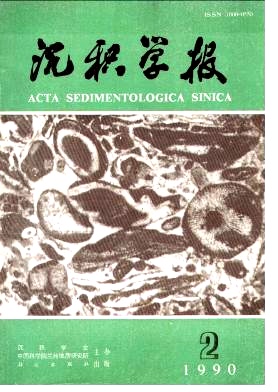ON THE STUDY OF SEDIMENTATION OF BURDIGALIAN MARIN MOLASS IN CREST BASIN
- Received Date: 1989-10-23
- Publish Date: 1990-06-10
Abstract: Crest Basin, lies in the middle Rhone valley in France. The tectonic position is situated at foreland depression of the late Alpine orogeny. A series of non-volcanic molassic fades-assemblage of Miocene is deposited in this basin, among which the Burdigalian is composed of sandstone, sandy mudstone, sandy limestone and sandy bioclastic limestone. Mainly by the analysis of facies distribution, fossil association, sedimentary characteristics of continental clasts, light and heavy sand minerals, clay mineral composition, and facies indicator elements as well as petrographic characteristics etc, the author approches the sedimentary environment, material origin of each facies in the series, and the paleogeographic feature of the basin.The results of the analysis show that Burdigalian deposits contain delta, beach, transitional zone, and offshore (central basin) sedimentary facies. Silican clastic sedimentation is predominant with short period of or partial calcareous sedimentation. Orientation of paleochnnel is NE- SW. The coastal coarse- grained clastic sediments are exposed between Autichamp to Moutier, and Rochette to Barcelonne, but the fine-graned sediments are well developed in central-west of the basin. The deposits show a complicated vertical and lateral facies change controlled by particular and complicated topography of basin, and by the inflences of importation of continental runoff. There are two principal sources of the continental clasts in Burdigalian sediments, they are Alpine erogenic zone containing typic metamorphic minerals of high pressure and low temperature, and Mesozoic overlay in adjacent areas containing typic minerals of contact metamorphism. They are transported respectively by sea current and river current. Fossil assemblages in sediments reflect a warm climate and normal salinity coastal environment. This inference is also sopported by the early diagenetic cementation developed in some carbonate facies with intertidal sedimentary characteristics
| Citation: | Wang Jianhua. ON THE STUDY OF SEDIMENTATION OF BURDIGALIAN MARIN MOLASS IN CREST BASIN[J]. Acta Sedimentologica Sinica, 1990, 8(2): 87-96. |






 DownLoad:
DownLoad: